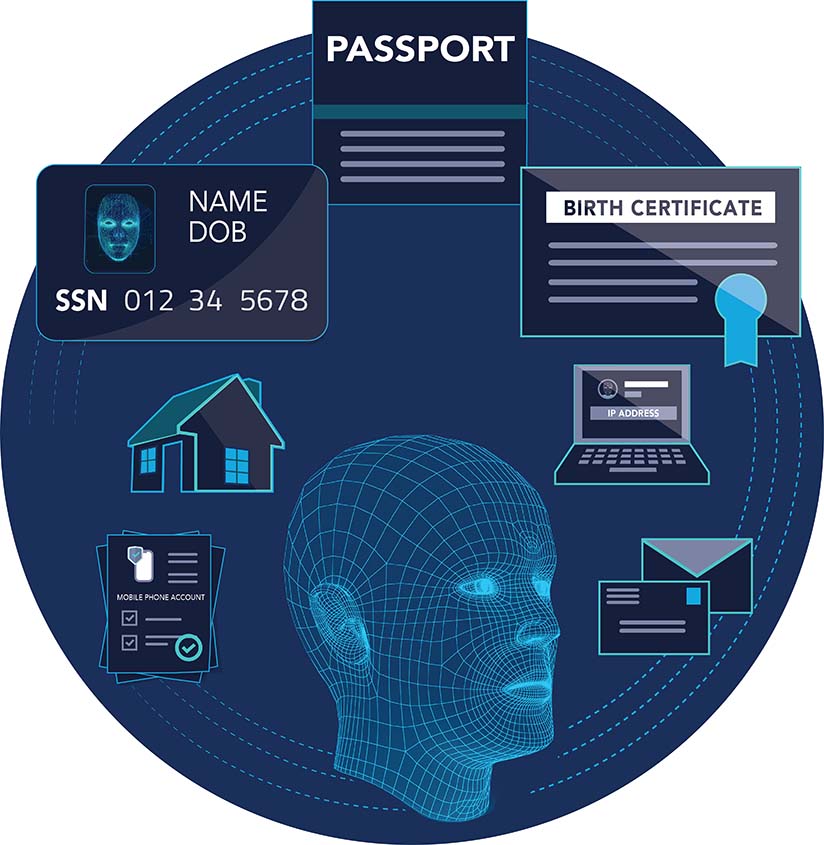What is Synthetic Identity Fraud?
In April 2021, the Federal Reserve released an industry-recommended definition of synthetic identity fraud: the use of a combination of personally identifiable information (PII) to fabricate a person or entity in order to commit a dishonest act for personal or financial gain.
Synthetic identity fraud consists of two main components:
- The creation of a synthetic identity
- Using that identity to commit fraud
Visit Synthetic Identity Fraud Defined to learn more about the definition, identity elements that may be used to create a synthetic identity, common uses of synthetics and the envisioned industry application of the definition.
Creation of A Synthetic
Certain factors that aid in the creation of synthetic identities make them more attractive to fraudsters than other types of fraudulent activity. From the foundational way the U.S. approaches identities to processes in place to build and foster credit, fraudsters zero in on the opportunities to not only create, but quickly establish a synthetic identity in the payment system.
Some contributing factors include:
- Use of Social Security numbers as primary identifiers
- Frequent data breaches that increase availability of PII to fraudsters
- Credit application processes
- Limited verification of identities

Downloadable Resources
Explore these resources for additional information on the basics of synthetic identity fraud.
| Document Title | Format | Reading Time |
|---|---|---|
| Synthetic Identity Fraud Definition (PDF) | Document | 2 minutes |
| Synthetic Identity Fraud: What is it and Why You Should Care? (PDF) | Document | 4 minutes |
| How is a Synthetic Identity Created? (PDF) | Document | 5 minutes |
| Allure of a Synthetic to a Fraudster: Ease of Creation (PDF) | Document | 6 minutes |
| Generative Artificial Intelligence Increases Synthetic Identity Fraud Threats (PDF) | Document | 5 minutes |
The synthetic identity fraud mitigation toolkit was developed by the Federal Reserve to help educate the industry about synthetic identity fraud and outline potential ways to help detect and mitigate this fraud type. Insights for this toolkit were provided through interviews with industry experts, publicly available research, and team member expertise. This toolkit is not intended to result in any regulatory or reporting requirements, imply any liabilities for fraud loss, or confer any legal status, legal definitions, or legal rights or responsibilities. While use of this toolkit throughout the industry is encouraged, utilization of the toolkit is voluntary at the discretion of each individual entity. Absent written consent, this toolkit may not be used in a manner that suggests the Federal Reserve endorses a third-party product or service.










